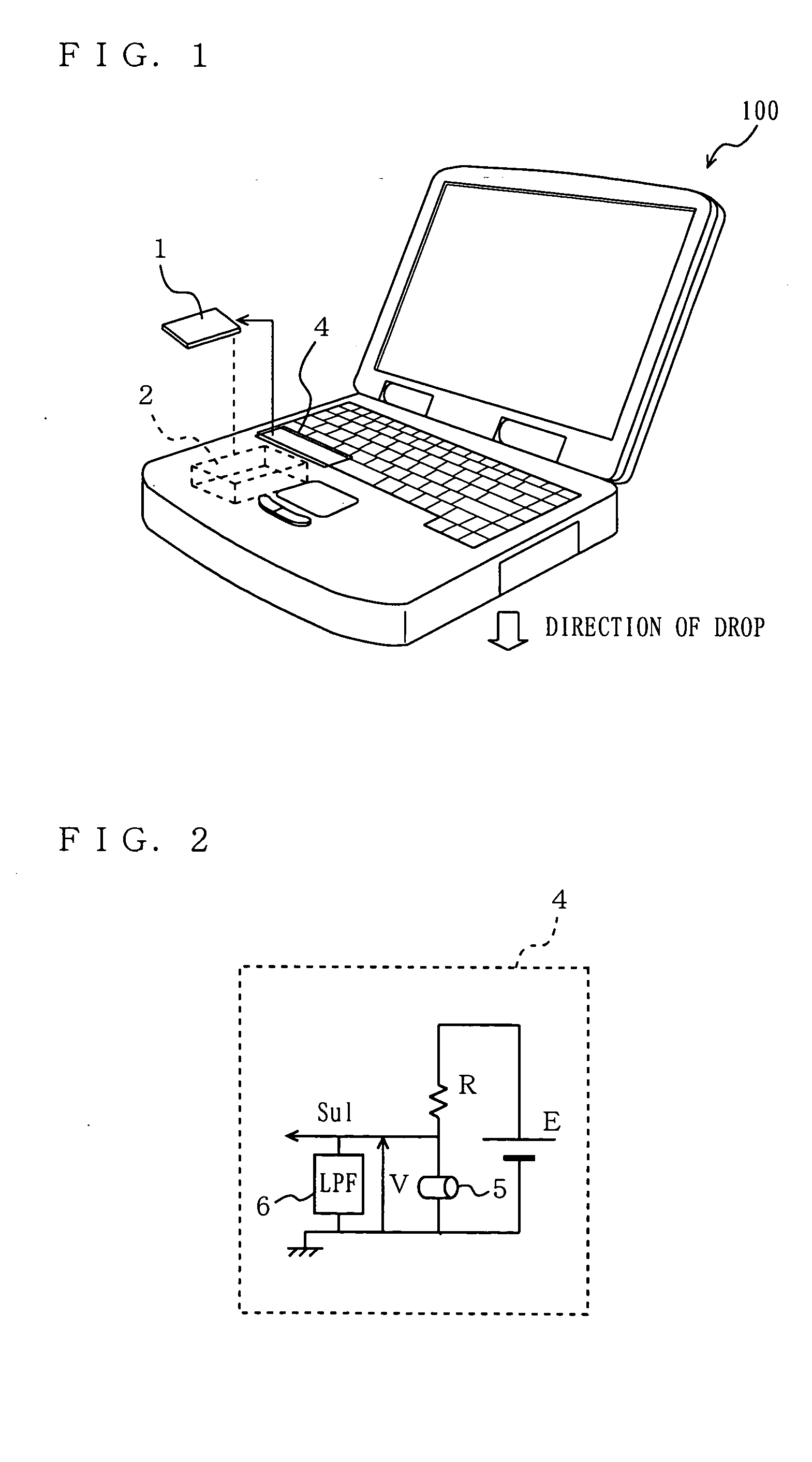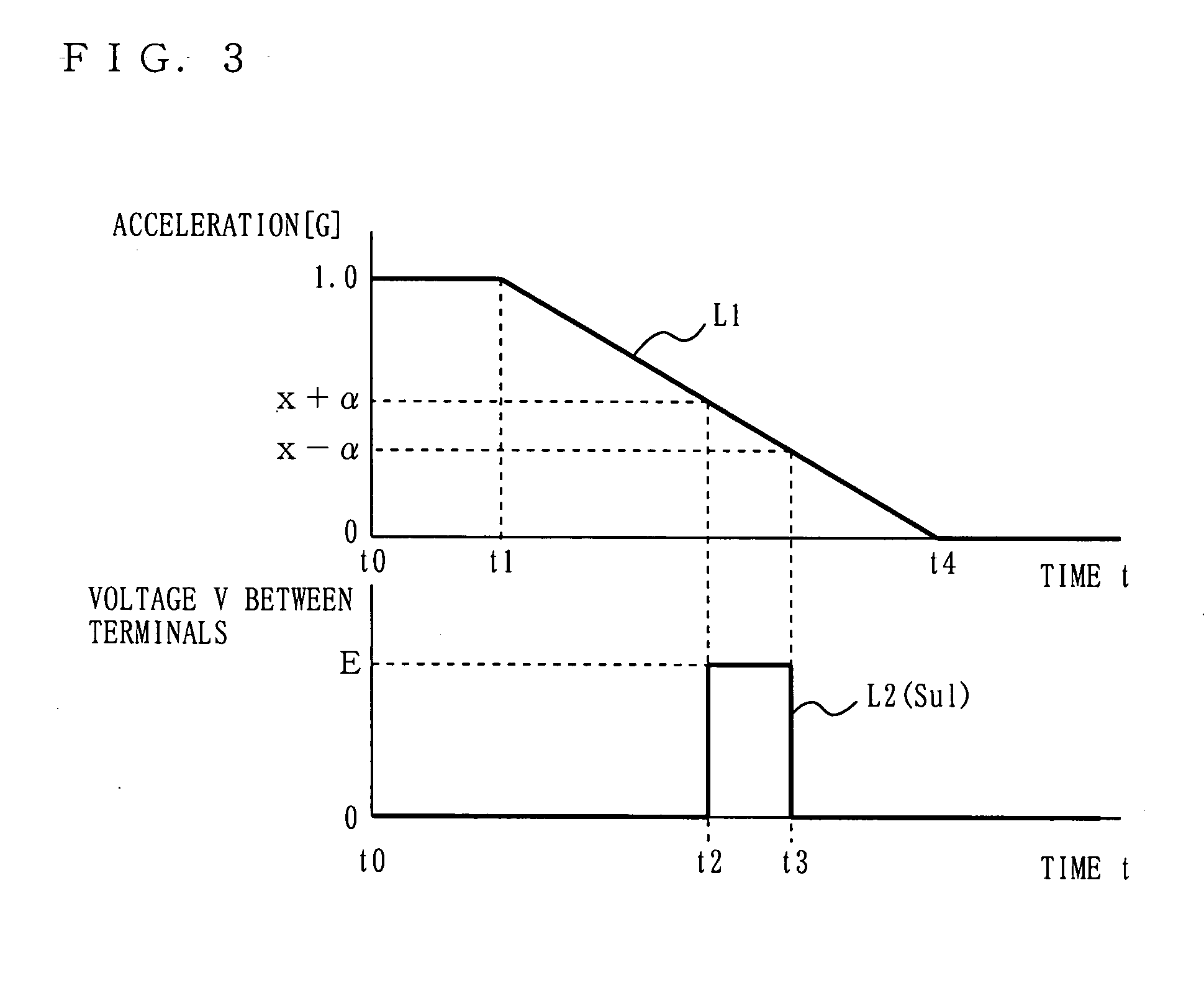Shock protection apparatus for hard disk drive
a technology for hard disk drives and shock protection apparatuses, which is applied in the direction of recording information storage, recording carrier contruction details, instruments, etc., can solve the problems of physical damage to the recording surface or the head, the entire recording surface of the disk may become unusable, and the inability to store/reproduce data located in at least a damaged part of the disk, etc., to achieve the effect of reducing the influence of the change over time of the shock-cushioning material
- Summary
- Abstract
- Description
- Claims
- Application Information
AI Technical Summary
Benefits of technology
Problems solved by technology
Method used
Image
Examples
Embodiment Construction
[0034]FIG. 1 shows an example case where a shock protection apparatus for a hard disk drive, according to the present invention is incorporated in a notebook PC. A HDD 1 is enveloped by a shock-cushioning material 3 (not shown) and mounted in a HDD pack 2. The HDD pack 2 and a head-slap sign detector 4 are installed on a notebook PC 100. The shock-cushioning material 3 has characteristics such as low stiffness and low resilience. The shock-cushioning material 3 holds the HDD 1 so as to be enveloped thereby and installed in the HDD pack 2, and protects the HDD 1 from shocks.
[0035] As shown in FIG. 2, the head-slap sign detector 4 generates an emergency unload signal Sul by means of a zero-gravity sensor 5 and outputs the signal Sul to the HDD1. A low-pass filter (LPF) 6 is provided to prevent chattering caused by the zero-gravity sensor 5 intermittently sensing a pseudo acceleration, which is similar to that generated at the time of a drop, generated when vibration is applied to the...
PUM
 Login to View More
Login to View More Abstract
Description
Claims
Application Information
 Login to View More
Login to View More - R&D
- Intellectual Property
- Life Sciences
- Materials
- Tech Scout
- Unparalleled Data Quality
- Higher Quality Content
- 60% Fewer Hallucinations
Browse by: Latest US Patents, China's latest patents, Technical Efficacy Thesaurus, Application Domain, Technology Topic, Popular Technical Reports.
© 2025 PatSnap. All rights reserved.Legal|Privacy policy|Modern Slavery Act Transparency Statement|Sitemap|About US| Contact US: help@patsnap.com



